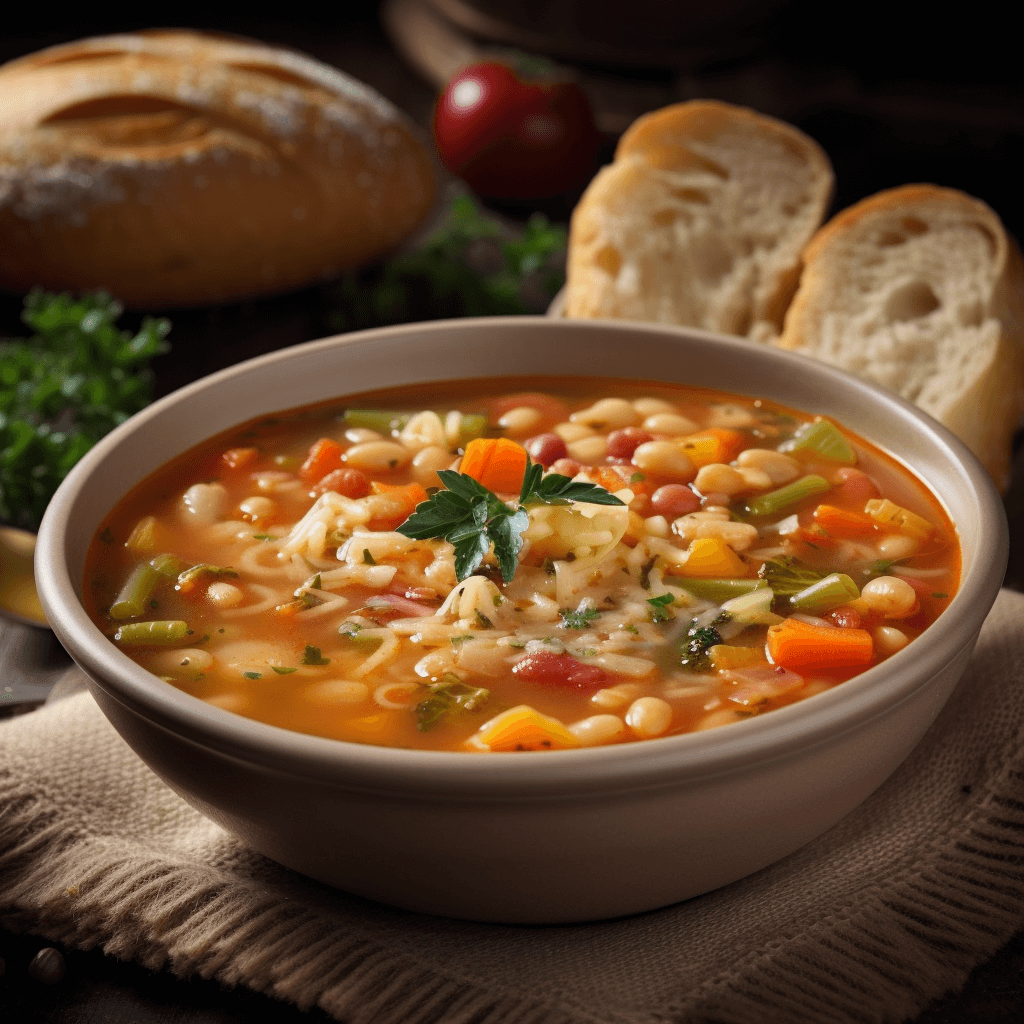
Minestrone soup traces its roots back to ancient Rome, where the first prototypes of this dish were made. However, the real development of the soup began in the Middle Ages, when Italy was divided into numerous city-states. In each of them, various ingredients were added to the minestrone, which were characteristic of the local cuisine, making the soup more diverse and tasty.
In the 17th century, after the discovery of America, new products such as tomatoes, potatoes, and corn reached Italy. This event influenced the development of Italian cuisine in general and minestrone in particular. The soup became even more hearty and nutritious, and its recipe underwent significant changes.
Minestrone got its name from the Italian word "minestrare", which means "to serve" or "serving". It is probably related to the tradition of serving soup at the table when it was offered to guests as an appetizing start to a meal. The word "minestrone" may also be derived from "minestra", which translates to "soup" or "first course".
Over time, the minestrone recipe has been adapted in different regions of Italy and around the world. For example, in the northern regions of Italy, the soup is prepared with the addition of rice, while in the south, pasta is used. In Venice, it is customary to cook minestrone using premium vegetables and shrimp.
In other countries, minestrone has also undergone changes depending on local culinary traditions and the availability of ingredients. In France, for example, they cook a soup similar to minestrone called "soupe au pistou", which is served with a special sauce made from basil, garlic, and olive oil. In America, minestrone became popular thanks to Italian immigrants and was adapted to local conditions, using products such as potatoes, corn, and more affordable types of meat.
Today, minestrone embodies the idea of healthy and delicious eating. Thanks to its rich composition of vegetables, grains, and, if desired, meat, the soup provides the body with all the necessary vitamins, minerals, and proteins. Minestrone is especially beneficial for vegetarians and vegans, as it is a source of plant protein and fiber. Additionally, the soup is low in calories and fat, making it an ideal choice for those who care about their health and figure.
Nowadays, there are many variations of the minestrone recipe, and everyone can find their perfect combination of ingredients. The main principles of soup preparation remain unchanged: using fresh vegetables, grains, and, if desired, meat or seafood. It is also important to consider the order of adding ingredients to the pot to preserve the maximum nutritional value and harmonious taste.
Traditionally, minestrone is served hot, but in the summer, it can also be offered cold. The soup is complemented by fresh bread or croutons and can be garnished with grated Parmesan, fresh basil, or cilantro. In some cases, pesto is served alongside minestrone – a traditional Italian sauce made from basil, garlic, olive oil, cheese, and pine nuts.
In conclusion, minestrone is not just a soup but a symbol of Italian culinary culture, the history of which spans several centuries. It combines simplicity and sophistication, health, and taste. Minestrone continues to win the hearts of gourmets around the world with its rich taste and variety of ingredients, proving the universality and excellence of Italian cuisine.
Today, minestrone is an integral part of the menus of many restaurants and home meals. It demonstrates that a magnificent dish does not necessarily have to be complex or expensive; using readily available products, cooked with soul and love, is enough. Minestrone is a prime example of how simple vegetables can transform into a culinary masterpiece that delights everyone with its aroma and unique taste.
At the same time, minestrone reflects the diversity of Italian cuisine, rich in traditions and recipe variations. Thanks to its flexibility, the soup easily adapts to the tastes and preferences of any person, making it a universal choice for lunches and dinners.
In this way, the history of the creation of minestrone soup is the story of the evolution of Italian cuisine, in which every region and even every family has contributed. Minestrone is the perfect example of how cultural heritage, traditions, and culinary delights come together in one dish, making it the embodiment of Italian hospitality and soul. The soup minestrone continues to live and develop, and its popularity grows every year, confirming the universality and superiority of Italian cuisine.